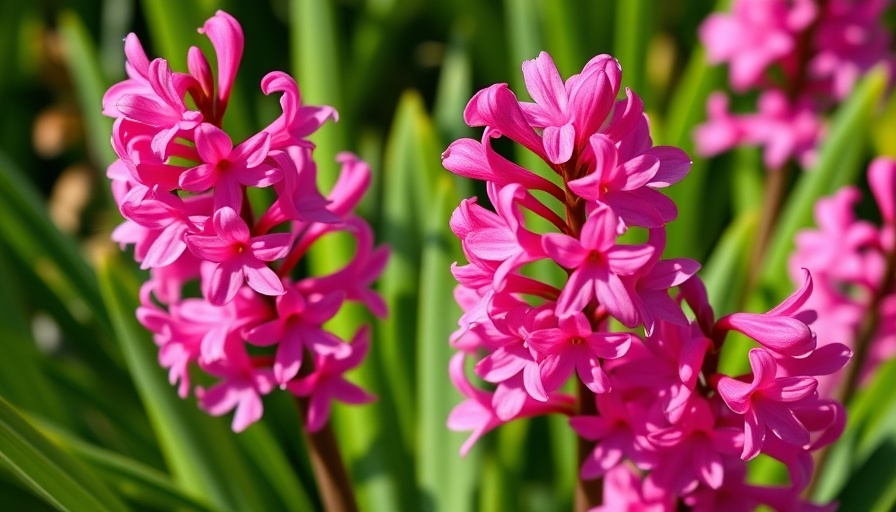
Embrace the Beauty: Why Ornamental Grasses Matter
Ornamental grasses are more than just decorative plants; they play a critical role in creating dynamic and lush gardens that captivate the eye. These hardy species provide year-round interest, boasting vibrant textures and movement in both summer and winter. Resilient and adaptable, many grasses thrive across diverse climates and soil conditions while offering essential ecological services such as erosion control. These plants contribute to a healthier ecosystem, attracting wildlife and enriching the local biodiversity.
Mastering the Art of Pruning: Timing is Everything
One of the most essential tasks for any gardener interested in ornamental grasses is knowing when to cut back. Cutting back ornamental grasses not only fosters lush growth but also prevents potential rot in the crown. With a variety of grasses available—including both cool and warm season types—understanding their unique needs can significantly enhance their health and appearance. Generally, late winter to early spring is the recommended timeframe for pruning, which allows for continued visual interest during the colder months while also preparing for new growth.
Step-by-Step Guide to Pruning Ornamental Grasses
When it comes to the act of trimming, techniques and tools are key. Start by gathering your essential tools: sharp pruning shears, gloves for protection, and a way to collect debris—whether that’s a wheelbarrow or biodegradable yard waste bags. Here’s a straightforward process to follow:
- Time It Right: Aim to prune just before new growth bursts through. This prevents interference with the growth cycle.
- Prepare Your Space: Clear out any old, dead material to allow space for new blades. This ensures fresh growth is energetic and vigorous.
- Make the Cut: Trim about six inches above the ground, carefully removing dried blades and leaving healthy shoots intact.
- Collect and Dispose: Make tidiness a priority by collecting all cuttings to prevent mess and encourage a low-maintenance garden environment.
Following these steps will result in vibrant and healthy ornamental grasses that thrive through the seasons.
Seasonal Insights: Ecological Benefits of Leaving Grasses Intact
Consider the ecological aspects of maintaining drought-resistant and low-maintenance landscapes; leaving dried ornamental grasses through winter not only adds aesthetic appeal but also supports local wildlife. Their dried blades serve as insulation for the crowns, providing a haven for birds, small mammals, and beneficial insects during winter’s harsh conditions. This multi-faceted approach not only beautifies landscapes but also nurtures the ecosystem.
Choosing the Right Grasses for Your Garden
Understanding the various species and varieties available expands your horticultural toolkit tremendously. For instance, Little Bluestem is magnificent for bird-friendly landscapes, while the Fountain Grass offers stunning visual contrasts within perennial beds. When selecting grasses, consider your garden’s style and the specific functions you want each variety to serve. This foresight can lead to creative landscaping possibilities, such as container gardening and strategic placement around outdoor kitchens or fire pits.
Conclusion: Preparing for New Growth
Caring for ornamental grasses is both an art and a science, involving understanding, timing, and technique. As you engage with your landscape this year, remember that patience is essential. Rushing to cut back can lead to missed opportunities for beauty and biodiversity. Instead, take these insights and embrace the natural rhythms of your garden.
If you're excited about transforming your outdoor space and enhancing ecology through proper grass care, check out our tips on backyard makeover ideas and eco-friendly yard care to ensure a thriving landscape.
 Add Row
Add Row  Add
Add 




Write A Comment